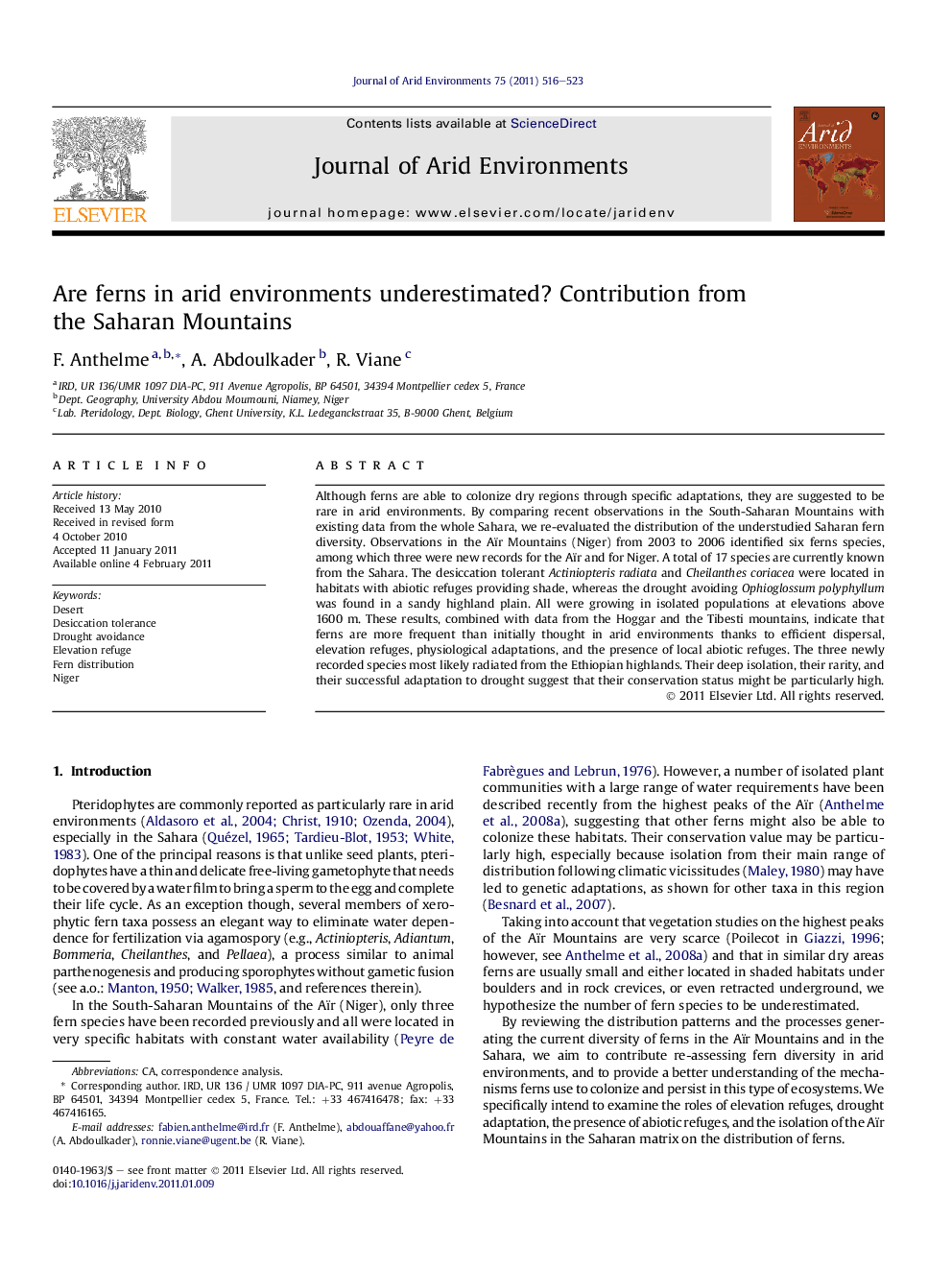| Article ID | Journal | Published Year | Pages | File Type |
|---|---|---|---|---|
| 4393739 | Journal of Arid Environments | 2011 | 8 Pages |
Although ferns are able to colonize dry regions through specific adaptations, they are suggested to be rare in arid environments. By comparing recent observations in the South-Saharan Mountains with existing data from the whole Sahara, we re-evaluated the distribution of the understudied Saharan fern diversity. Observations in the Aïr Mountains (Niger) from 2003 to 2006 identified six ferns species, among which three were new records for the Aïr and for Niger. A total of 17 species are currently known from the Sahara. The desiccation tolerant Actiniopteris radiata and Cheilanthes coriacea were located in habitats with abiotic refuges providing shade, whereas the drought avoiding Ophioglossum polyphyllum was found in a sandy highland plain. All were growing in isolated populations at elevations above 1600 m. These results, combined with data from the Hoggar and the Tibesti mountains, indicate that ferns are more frequent than initially thought in arid environments thanks to efficient dispersal, elevation refuges, physiological adaptations, and the presence of local abiotic refuges. The three newly recorded species most likely radiated from the Ethiopian highlands. Their deep isolation, their rarity, and their successful adaptation to drought suggest that their conservation status might be particularly high.
Research highlights► Ferns species in arid environments are poorly studied and thought to be infrequent. ► We review the presence of as much as 17 species in the Saharan mountains. ► The new records found take advantage of elevational refuges above 1600 m a.s.l. ► Ferns develop particularly efficient mechanisms to avoid drought or to cope with it. ► Fern diversity may be more than initially thought in arid environments.
